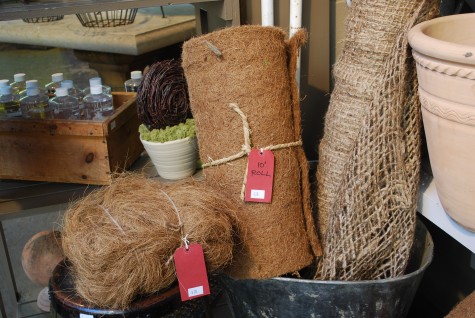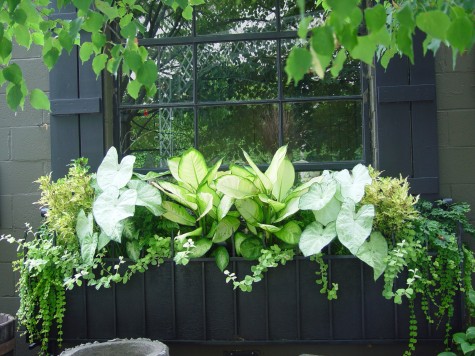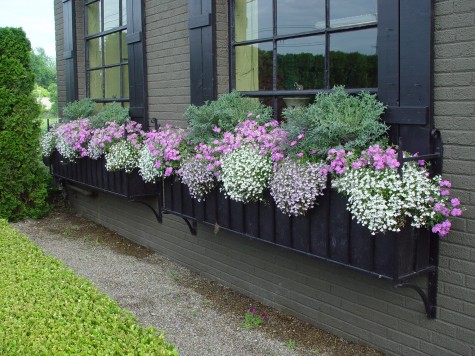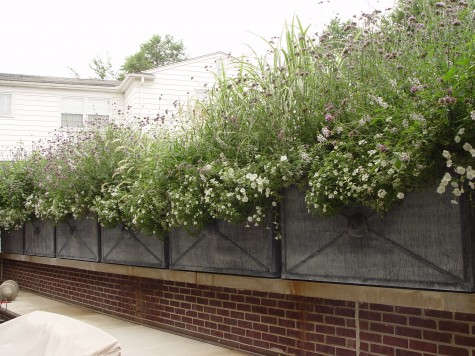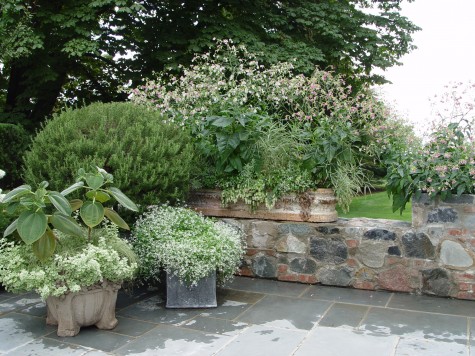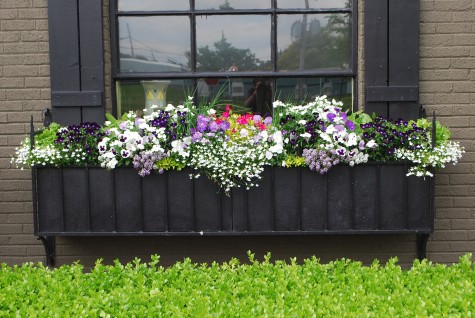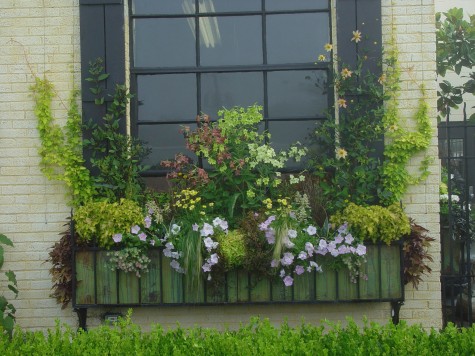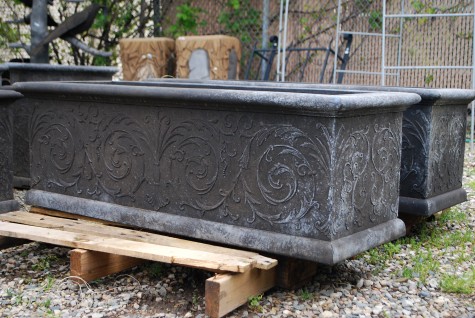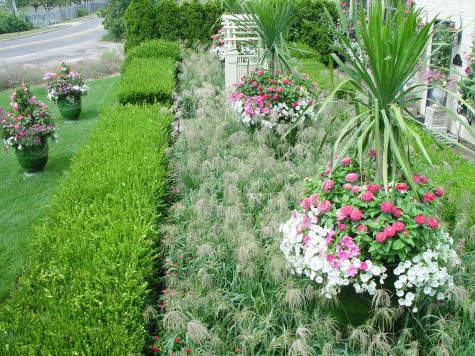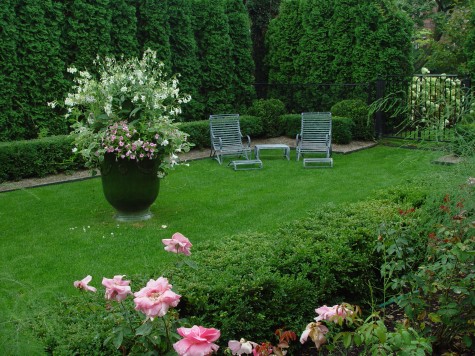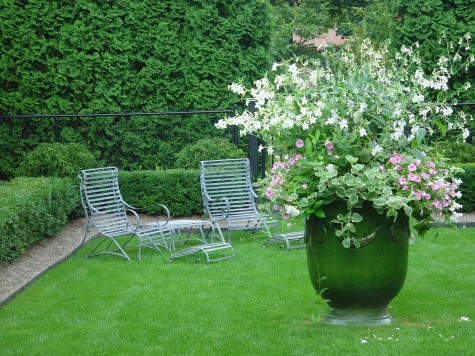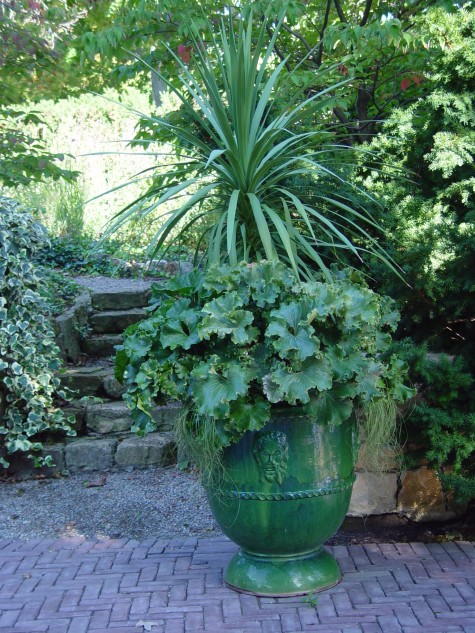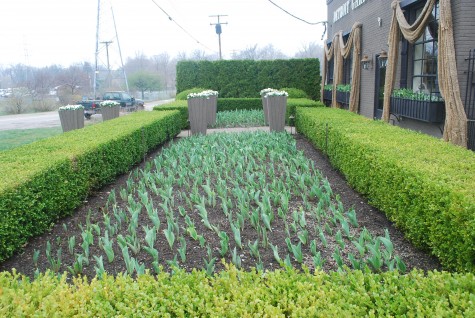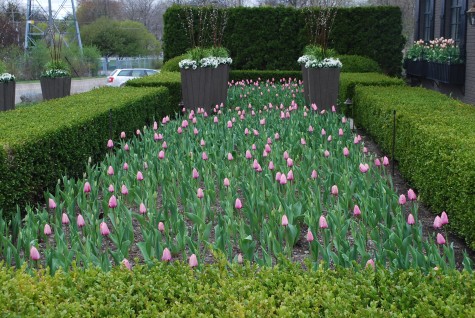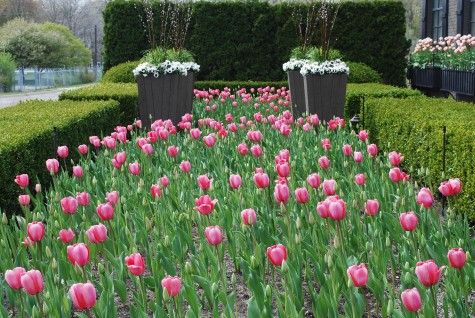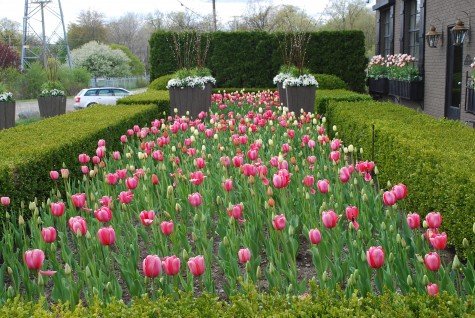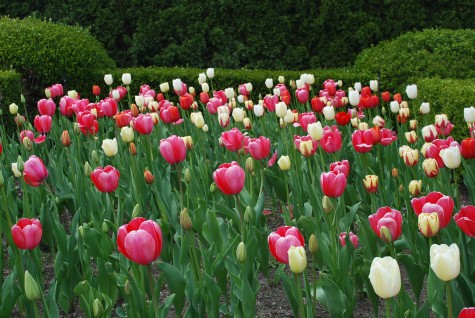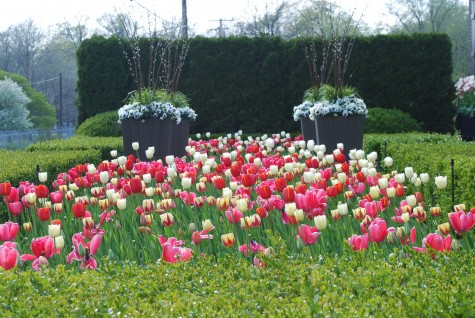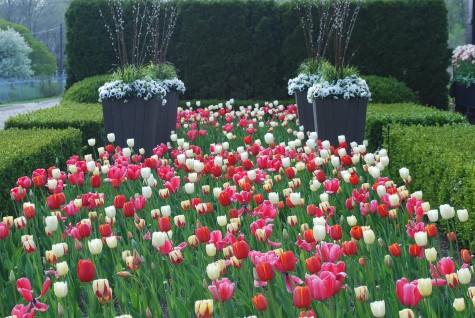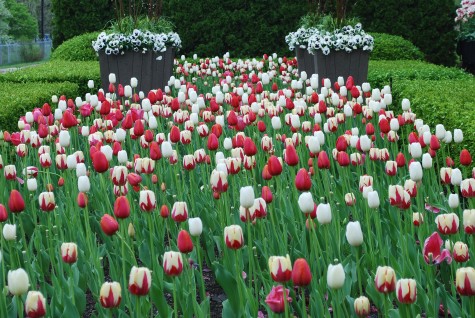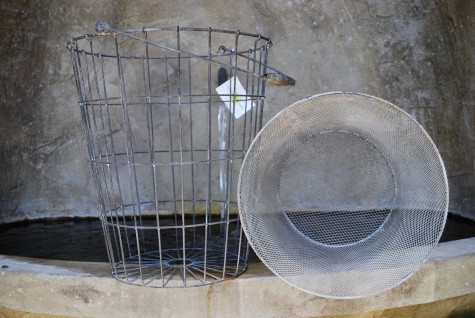 This photograph of a wirework planter and insert lowers my blood pressure considerably. I am planting furiously-directing and following three crews. My group-there are 16 of us. I know there are celebrated CEO’s who manage many more than I-but I find what I can keep track of, instruct and help out-16 is a plenty big number. I do plant pots for the store-it is recreation of a sort. I planted a few wirework planters yesterday; I have a big love for steel in any dimension. Steel wire, galvanized, painted, raw, faux finished- I find all the available forms of interest. Wire planters need lining-soil and wire need an intervening medium of some type.
This photograph of a wirework planter and insert lowers my blood pressure considerably. I am planting furiously-directing and following three crews. My group-there are 16 of us. I know there are celebrated CEO’s who manage many more than I-but I find what I can keep track of, instruct and help out-16 is a plenty big number. I do plant pots for the store-it is recreation of a sort. I planted a few wirework planters yesterday; I have a big love for steel in any dimension. Steel wire, galvanized, painted, raw, faux finished- I find all the available forms of interest. Wire planters need lining-soil and wire need an intervening medium of some type.
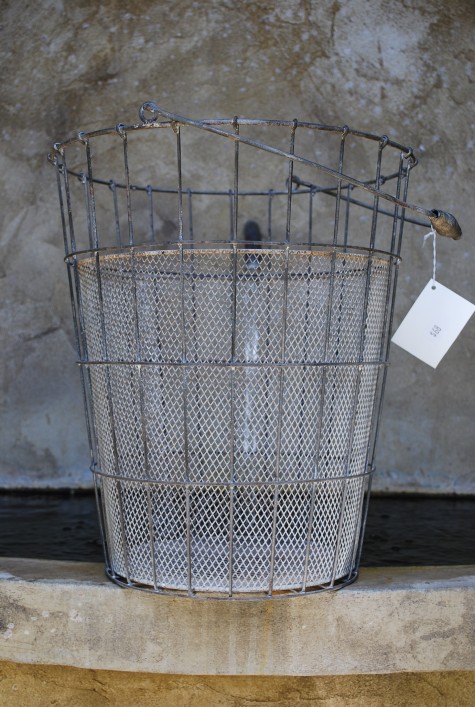 This galvanized steel basket came with a densely constructed liner. Landscape fabric is all this bucket needs to keep the soil where it belongs. The galvanized mesh is almost dense enough on its own to hold soil. The fabric will not obstruct the pattern of the diamond mesh in any way. This basket could be planted in a loose, or very contemporary manner, but surely it asks for a very simple liner.
This galvanized steel basket came with a densely constructed liner. Landscape fabric is all this bucket needs to keep the soil where it belongs. The galvanized mesh is almost dense enough on its own to hold soil. The fabric will not obstruct the pattern of the diamond mesh in any way. This basket could be planted in a loose, or very contemporary manner, but surely it asks for a very simple liner.
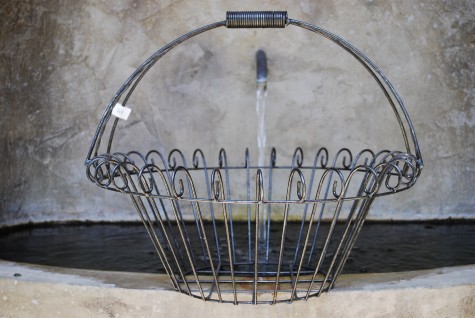 This round heavy wire basket-beautiful in its own right. To ready this basket for planting-any number of materials would work. Florist’s moss, in giant sheets, is a good choice. We call high quality florist’s moss “hides”- large intact sheets make easy work of lining wire. Small pieces are a nuisance to handle, in addition to being an invitation to topiary erosion. Wet soil running out the side of your basket-not so pretty. If you must use smaller moss pieces, overlap them a good amount. Well done moss makes a great presentation. The moss in contrast to the steel wire-easy on the eye. Alternative liners for wire baskets-you have choices., should florist’s moss not enchant you. The wiry coir mat-difficult to form, but eminently effective. Landscape fabric-cool and easy.
This round heavy wire basket-beautiful in its own right. To ready this basket for planting-any number of materials would work. Florist’s moss, in giant sheets, is a good choice. We call high quality florist’s moss “hides”- large intact sheets make easy work of lining wire. Small pieces are a nuisance to handle, in addition to being an invitation to topiary erosion. Wet soil running out the side of your basket-not so pretty. If you must use smaller moss pieces, overlap them a good amount. Well done moss makes a great presentation. The moss in contrast to the steel wire-easy on the eye. Alternative liners for wire baskets-you have choices., should florist’s moss not enchant you. The wiry coir mat-difficult to form, but eminently effective. Landscape fabric-cool and easy.
 This small handmade laser cut steel pot is lined in grey landscape fabric. This is a compatible pairing; the intricate steel work is the star of the show. The wiry succulent completes the thought.
This small handmade laser cut steel pot is lined in grey landscape fabric. This is a compatible pairing; the intricate steel work is the star of the show. The wiry succulent completes the thought.

Coir is thick and difficult to handle-these wire baskets came with the liner already made. The color and texture is a good contrast to the wirework. Containers such as these are perfect for herbs, as they drain fast. Succulents are likewise a good choice. A small basket such as this may not be a good choice for those flowers needing regular moisture. I will water once a day if I have to, but I like an every other day schedule the best. As this suits my life, I plant large containers.
 This fancy Nancy white wirework oval planter-I could line and plant this at least ten different ways. Should you be shopping, be clear in your own mind about what effect you are trying to achieve. Something delicate like the wire-I would go there first. Maidenhair ferns? Miniature fuchsias? Thyme, variegated oregano, and alyssum?
This fancy Nancy white wirework oval planter-I could line and plant this at least ten different ways. Should you be shopping, be clear in your own mind about what effect you are trying to achieve. Something delicate like the wire-I would go there first. Maidenhair ferns? Miniature fuchsias? Thyme, variegated oregano, and alyssum?
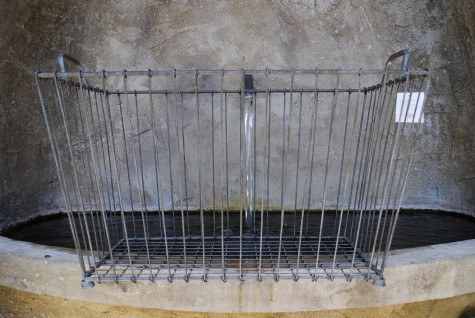 This geometric wire rectangle has plenty of space between the bars-so a bulkier liner material would work just fine.
This geometric wire rectangle has plenty of space between the bars-so a bulkier liner material would work just fine.
Natural materials from jute, burlap, hemp fiber and the like make great liner material. They have great textural appeal, which looks great paired with a simple container. Once you pass by the moss option, there are plenty of things out there. Fabrics-just that option alone could produce some stunning containers.
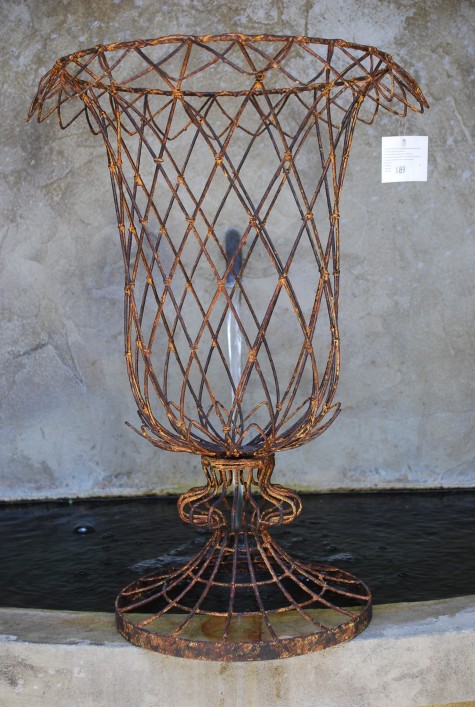
This faux finished wire urn is tall and elegant. I stuffed the entire thing with moss. The base-stuffed solid with moss.
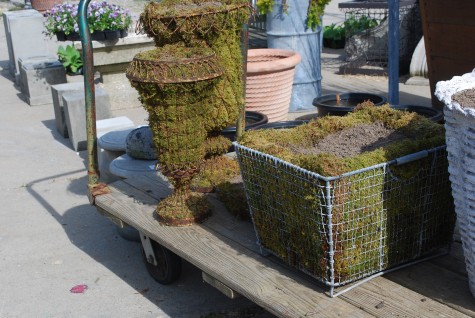
Once the moss is in place, I trim off the wild hairs, and dye it with moss dye. This helps a lot to keep the color better longer.
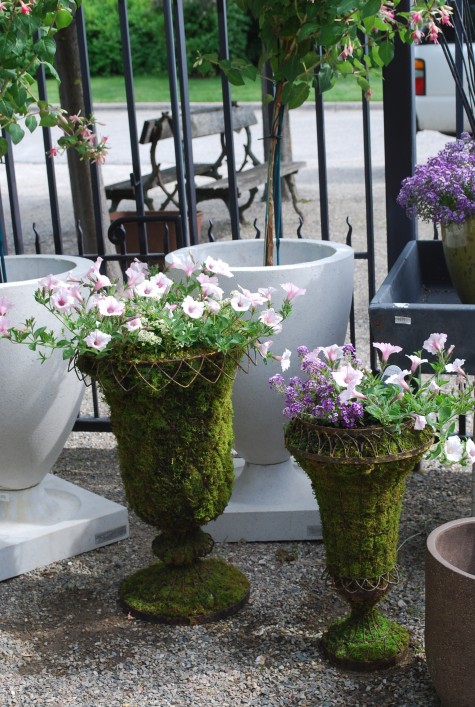
Twenty minutes this morning planting was the emotional equivalent of a cat nap. These vista silverberry mini petunias have a delightfully horizontal growth habit-very pretty.
